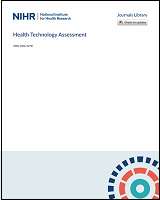NCBI Bookshelf. A service of the National Library of Medicine, National Institutes of Health.
Beard DJ, Campbell MK, Blazeby JM, et al. Placebo comparator group selection and use in surgical trials: the ASPIRE project including expert workshop. Southampton (UK): NIHR Journals Library; 2021 Sep. (Health Technology Assessment, No. 25.53.)

Placebo comparator group selection and use in surgical trials: the ASPIRE project including expert workshop.
Show detailsThe origin of the word ‘placebo’ is from the Latin placere, ‘to please’.
Various definitions of placebo exist, including a medicine or procedure prescribed for the psychological benefit to the patient rather than for any physiological effect, and a substance that has no therapeutic effect and is used as a control in testing new drugs.
There is an important distinction between the known placebo effects within established treatment and those that are formally, and somewhat artificially, devised for evaluation purposes, as per control in a clinical trial. This document refers to ‘placebo’ in the context of evaluation purposes (in surgery) only.
Early distinctions must also be made between the classical (pharmacological)-derived definitions and those modified for placebo-controlled evaluations of surgery. Definitions for placebo surgical intervention vary from ‘a surgical intervention with theoretically little benefit’ to ‘sham’ surgery or ‘placebo surgical intervention’, a procedure in which presumed ‘active’ components of the procedure or the critical surgical element were removed. Many of these terms are used interchangeably and often without an ascribed clear meaning. After consideration, the word ‘placebo’ for surgical evaluation has been used in the report along with the concept of a ‘critical surgical element’.
Further distinction is observed between a completely ‘sham’ or ‘dummy’ treatment (i.e. an entirely pretend surgery or small superficial incision only) and varied levels of placebo ‘intervention’ in which some part of the surgery is delivered, with or without additional known benefit. However, rather than ascribing hard boundaries, a concept in which the placebo intervention is described in levels of fidelity14 to the complete surgical intervention may be helpful. A placebo intervention can be either low fidelity [i.e. there is little similarity with the complete surgical intervention (sham surgery being a category of overall least fidelity)] or high fidelity (i.e. the surgical intervention has most components of the complete treatment, but perhaps without the presumed active or critical component). The complete treatment (no placebo) has full fidelity. A schema is given in Table 1, which can also be used in cross-reference to the DITTO (deconstruct, identify, take out, think, optimise) method for deconstruction, as reported in Chapter 7.15
TABLE 1
Levels of fidelity to the complete surgical intervention for placebo-controlled surgical trial design
The nomenclature is important. Although all placebo-based interventions (in a surgical trial) have some form of intentional ‘deception’ to support the methodology (i.e. where knowledge of the intervention received is kept hidden), patient representatives have expressed uneasiness with this descriptor. Likewise, terms such as ‘magic’ and ‘simulated surgery’ are considered inappropriate. ‘Sham’, although much used as a descriptor (scientifically), is also considered unacceptable to use with patients because of its negative connotations with regard to quality of clinical practice/caregivers.
- What is ‘placebo’ in the context of surgical trials? - Placebo comparator group ...What is ‘placebo’ in the context of surgical trials? - Placebo comparator group selection and use in surgical trials: the ASPIRE project including expert workshop
- Introduction - A high-dose preparation of lactobacilli and bifidobacteria in the...Introduction - A high-dose preparation of lactobacilli and bifidobacteria in the prevention of antibiotic-associated and Clostridium difficile diarrhoea in older people admitted to hospital: a multicentre, randomised, double-blind, placebo-controlled, parallel arm trial (PLACIDE)
- Introduction - Different temperature thresholds for antipyretic intervention in ...Introduction - Different temperature thresholds for antipyretic intervention in critically ill children with fever due to infection: the FEVER feasibility RCT
- Triangulation exercise - Aquatic therapy for children with Duchenne muscular dys...Triangulation exercise - Aquatic therapy for children with Duchenne muscular dystrophy: a pilot feasibility randomised controlled trial and mixed-methods process evaluation
- Review methods - The effectiveness, acceptability and cost-effectiveness of psyc...Review methods - The effectiveness, acceptability and cost-effectiveness of psychosocial interventions for maltreated children and adolescents: an evidence synthesis
Your browsing activity is empty.
Activity recording is turned off.
See more...